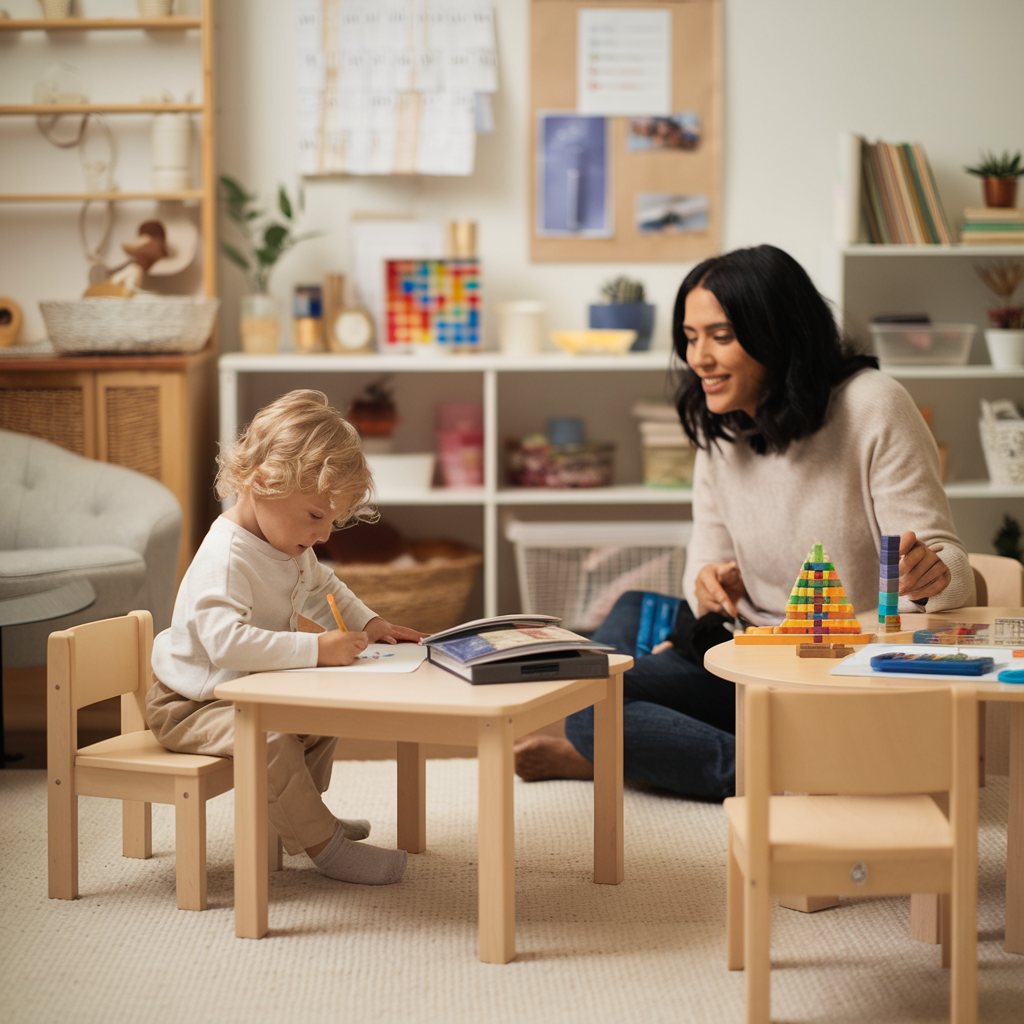Every child learns in their own unique way. Understanding and supporting your child’s learning style is key to helping them succeed academically and build confidence. Whether your child is a visual, auditory, kinesthetic, or reading/writing learner, recognizing how they learn best can make a world of difference in their educational journey. By learning how to support your child’s learning style, you can provide the right tools and environment to foster success.
Why Learning Styles Matter
Children absorb information in different ways, and one method may work better than others depending on their individual learning style. Supporting your child’s learning style helps them process information more efficiently, improving both understanding and retention. It also helps boost their self-esteem as they learn in ways that resonate with them.
1. Increases Engagement
When children learn in a way that suits their natural preferences, they become more engaged with the material. For example, visual learners might prefer diagrams, while auditory learners excel when they listen to explanations. By tailoring learning to their style, you can keep your child interested and motivated.
2. Builds Confidence
When children are supported in a way that matches their learning style, they’re more likely to succeed. As they experience success, their confidence grows. This positive feedback loop encourages them to keep trying and embrace new challenges, both academically and personally.
3. Improves Academic Performance
Understanding your child’s learning style can also lead to improved academic performance. When children are taught in a way that makes sense to them, they are more likely to grasp complex concepts and retain information. This helps them perform better in school and develop a deeper love for learning.
4. Reduces Frustration
Supporting your child’s learning style can reduce frustration in both the child and the parent. When children struggle with a learning method that doesn’t fit, it can lead to frustration and a negative attitude toward learning. By adjusting your approach, you can help your child feel more comfortable and confident in their abilities.
Types of Learning Styles
Understanding the different learning styles is the first step toward helping your child succeed. Here are the four main types of learning styles and how you can support them:
1. Visual Learners
Visual learners process information best when it is presented through pictures, diagrams, and charts. They learn by seeing and often benefit from using color-coded notes, visual aids, or mind maps.
How to support visual learners:
- Use flashcards and diagrams to explain concepts.
- Encourage your child to visualize information through mind maps.
- Use color coding for notes or assignments to differentiate between topics.
2. Auditory Learners
Auditory learners excel when they can hear information. They often retain more by listening to lectures, discussions, or audiobooks rather than reading texts. These learners benefit from speaking aloud or participating in group discussions.
How to support auditory learners:
- Encourage your child to read aloud or explain concepts to others.
- Use educational podcasts or audiobooks to supplement reading material.
- Engage in discussions and debates to help them verbalize their thoughts.
3. Kinesthetic Learners
Kinesthetic learners learn best through hands-on activities and movement. They often need to physically engage with the material to fully understand it. These learners excel in activities like experiments, building models, or using manipulatives.
How to support kinesthetic learners:
- Incorporate physical activities or games into learning.
- Provide opportunities for hands-on learning, such as science experiments or building projects.
- Use manipulatives like blocks or objects to help explain abstract concepts.
4. Reading/Writing Learners
Reading/writing learners prefer to learn by reading texts and writing notes. They excel when they can organize information through writing and often benefit from reading assignments and written instructions.
How to support reading/writing learners:
- Provide ample reading materials and encourage note-taking.
- Use written instructions and lists to help them organize their thoughts.
- Encourage journaling or writing summaries of what they’ve learned.
How to Identify Your Child’s Learning Style
Identifying your child’s learning style can be done through observation, experimentation, and communication. Here are a few tips to help you discover which learning style works best for your child:
1. Observe How They Engage with New Information
Pay attention to how your child responds to different teaching methods. For example, do they prefer reading instructions, listening to explanations, or getting hands-on with the material? By observing their preferences, you can get clues about their dominant learning style.
2. Experiment with Different Approaches
Try introducing different learning techniques and see which ones resonate with your child. For example, you can experiment with using visual aids, audiobooks, or hands-on projects to gauge which approach your child finds most effective.
3. Communicate with Your Child
Ask your child how they prefer to learn. By discussing their experiences, they can provide insight into which methods they find most helpful. Encourage them to express their preferences openly, and adapt your teaching methods accordingly.
4. Consult Teachers and Educators
Teachers often have a good understanding of how students learn best. Speak with your child’s teachers to get their perspective on which learning methods seem to work well in the classroom. Their input can help you better support your child at home.
Activities to Support Your Child’s Learning Style
Here are some practical activities that can help you support your child’s specific learning style at home:
1. Visual Learning Activities
For example, create colorful mind maps together to break down complex topics. Encourage your child to use flashcards or draw diagrams to explain ideas.
2. Auditory Learning Activities
Additionally, engage in discussions or have your child explain topics aloud. Use educational podcasts or audiobooks to supplement their learning, and have them participate in group activities to encourage verbal communication.
3. Kinesthetic Learning Activities
Moreover, organize hands-on learning activities like science experiments, building projects, or outdoor learning experiences. Incorporate movement, such as jumping while reciting facts, to keep kinesthetic learners engaged.
4. Reading/Writing Learning Activities
Next, provide reading materials that align with your child’s interests. Encourage them to take notes, write reports, or keep a journal to reflect on what they’ve learned. Writing summaries or organizing information helps these learners retain knowledge.
Common Mistakes to Avoid When Supporting Your Child’s Learning Style
Avoiding these common pitfalls ensures that you can effectively support your child’s learning style:
1. Forcing One Learning Style
First, avoid forcing a specific learning style that may not resonate with your child. While it’s important to introduce various methods, focus on the one that suits them best.
2. Ignoring Other Learning Styles
Additionally, don’t ignore the possibility that your child may benefit from a combination of learning styles. Many children are multimodal learners, meaning they can engage with different styles depending on the subject.
3. Overemphasizing Learning Styles
Moreover, while learning styles are important, avoid overemphasizing them to the point where your child feels restricted. Flexibility is key in allowing them to explore different approaches.
4. Comparing to Other Children
Thus, avoid comparing your child’s learning style and progress to that of their peers. Every child learns at their own pace, and it’s important to celebrate their individual strengths.
Conclusion: Helping Your Child Thrive by Supporting Their Learning Style
Understanding and supporting your child’s learning style can help them thrive academically and emotionally. By using personalized strategies, you can create a learning environment that matches their strengths and preferences. Whether your child is a visual, auditory, kinesthetic, or reading/writing learner, offering the right support can boost their confidence and set them up for long-term success.
Ressources library :
Internal Links:
External Links:














